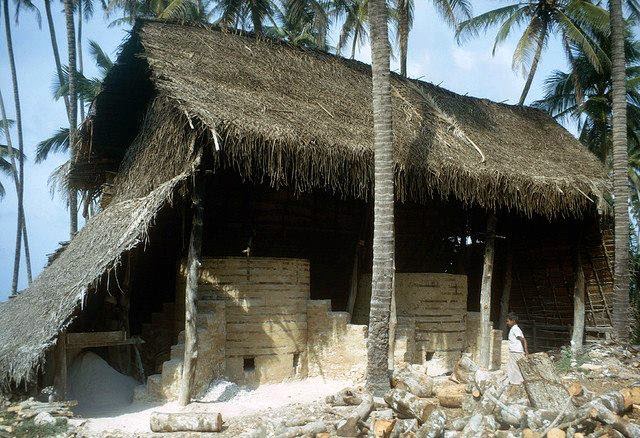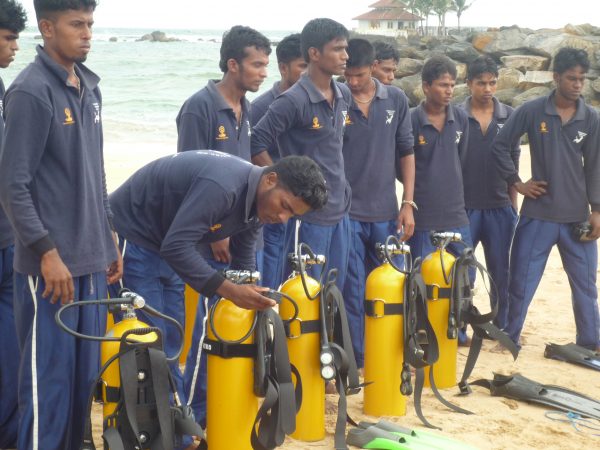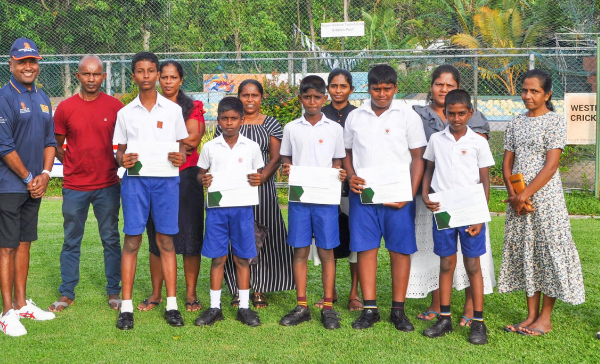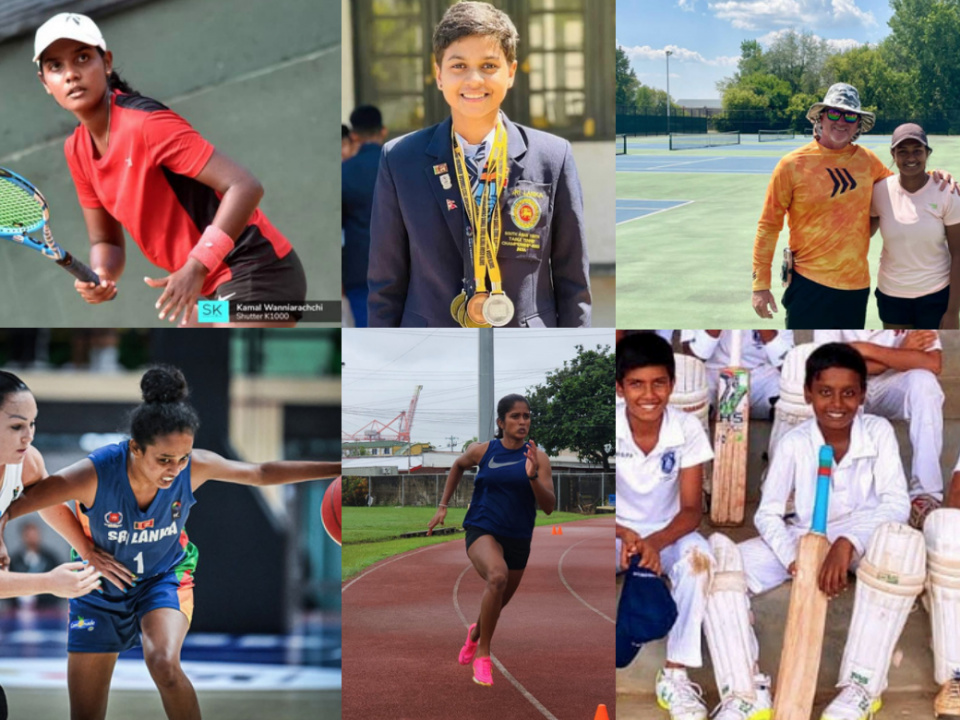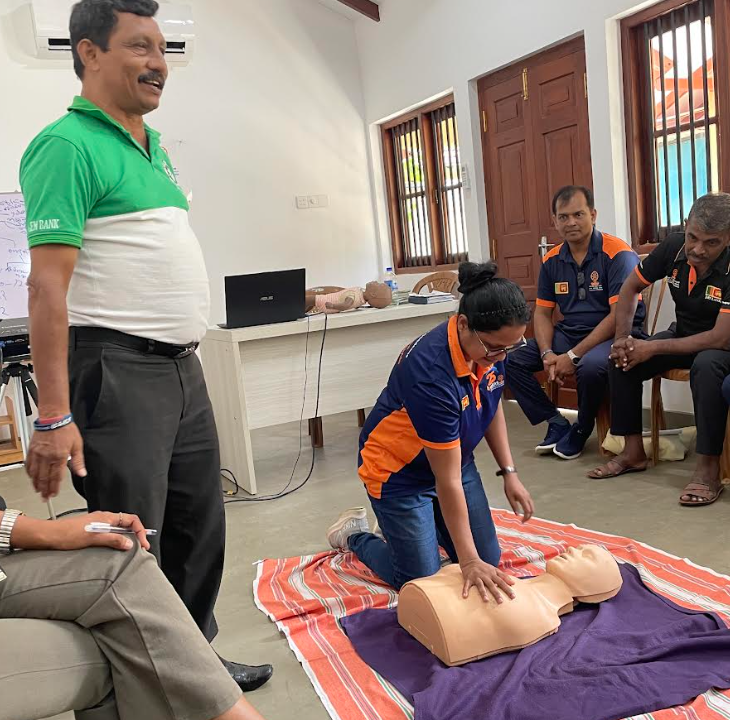The Foundation of Goodness is a holistic rural development model that seeks to bridge the urban-rural divide in Sri Lanka via 10 empowerment divisions across 850+ villages island-wide, and reached over 135,000+ beneficiaries in 2023 alone by way of 20 Empowerment Centres, free of cost.
Restoring the Coral Reefs of Seenigama

ICE Workshop 2019 : Taking Innovation, Creativity and Entrepreneurship to rural Sri Lanka
December 12, 2019
Mahawilachchiya Village Heartbeat Empowerment Centre (VHE)
December 19, 2019Coral mining has been a problem plaguing Sri Lankan coastlines for decades. Burning mined coral to produce ‘lime’ used in the construction industry was a profitable way of life for coastal communities where families boasted generations of coral miners.
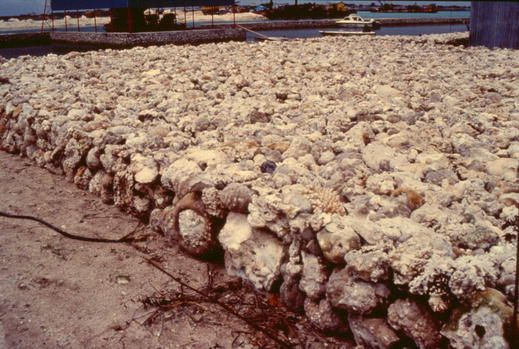
Despite the introduction of a law prohibiting the mining of coral as early as 1983, the failure to enforce these laws by relevant authorities saw a steady degradation of coral reefs especially along the southern coastline and two decades later when the Indian Ocean Tsunami battered Sri Lanka in 2004 the ramifications of the destruction of coral reefs became apparent.
Healthy coral reefs provide their adjacent coasts with substantially more protection from destructive tsunami waves than do unhealthy or dead reefs, a Princeton University study suggests (Kunkel et al., 2006).
Princeton professor Michael Oppenheimer observes, “Healthy reefs have rougher surfaces, which provide friction that slows the waves substantially in comparison with smoother, unhealthy ones”.
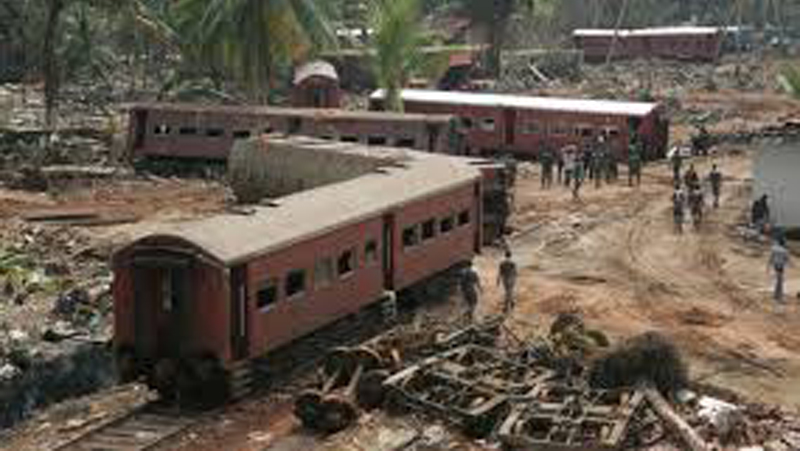
Tsunami train wreck in Peraliya
Photo Credits: Daily News
An unfortunate but practical example was provided during the 2004 tsunami. The town of Peraliya (situated 500 m away from Seenigama), was awash with an approximately 1.5-km water inundation from a wave of 10 m in height; the inundation there carried the passenger train Samudra Devi (the “Ocean Queen”) inland some 50 m, killing 1700 people. Yet,˜3 km to the South, in Hikkaduwa, there was a mere 2-3 m wave height, 50 m inundation and no deaths (Fernando et al., 2005).
After the Tsunami, what was apparent for all to see was also confirmed by numerous studies like those above, which definitively pointed to a correlation between coral mining/ coral reef destruction and the severity of the tsunami impact. The coastal communities finally came to realize the repercussion of their actions and a colloquial refrain to be heard from many was ‘We destroyed the sea and the sea destroyed us” (Api muhuda kewa, muhuda api kewa).
If not for the tsunami this illegal environmental disaster could have continued as there were no alternative livelihood options, with youth as young as 16 years indulging in this unacceptable practice, with air pollution also rising to unimaginable levels.
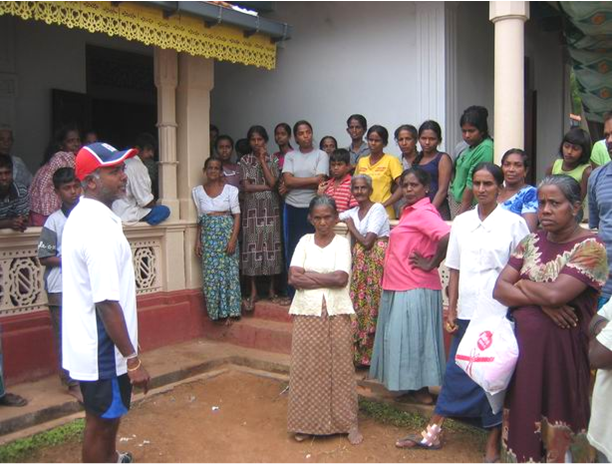
Kushil and the FoG team rally together right after the tsunami.
The Foundation of Goodness itself faced many setbacks in the aftermath of the tsunami and were facing down the daunting task of rebuilding the village turned to ruin and rubble with the determination to make it better than it used to be. A part of this resolve was to ensure environmental and ocean protection to prevent the recurrence of such tragic events. We were also aware that unless the communities were given an alternative source of income generation, they were more likely to return to their old habits.
‘For generations, the people of my village had been coral farmers. Coral had been harvested to be used in the creating of quicklime, slowly depleting the natural reef. When the 2004 Tsunami struck, we had destroyed our natural shield. The Tsunami hit us hard, we lost family, our homes and our livelihoods. Subsequent research showed that the impact of the Tsunami had been greatly reduced in areas protected by natural coral reefs. As the villagers say ‘we lived off the sea, and the sea came to collect its debt’. That is why this project is so close to my heart. We as a community have come full circle, the former coral farmers have become coral conservators.’– Kushil Gunasekera, Founder and Chief Trustee of the Foundation of Goodness (FoG).
Dive for Good
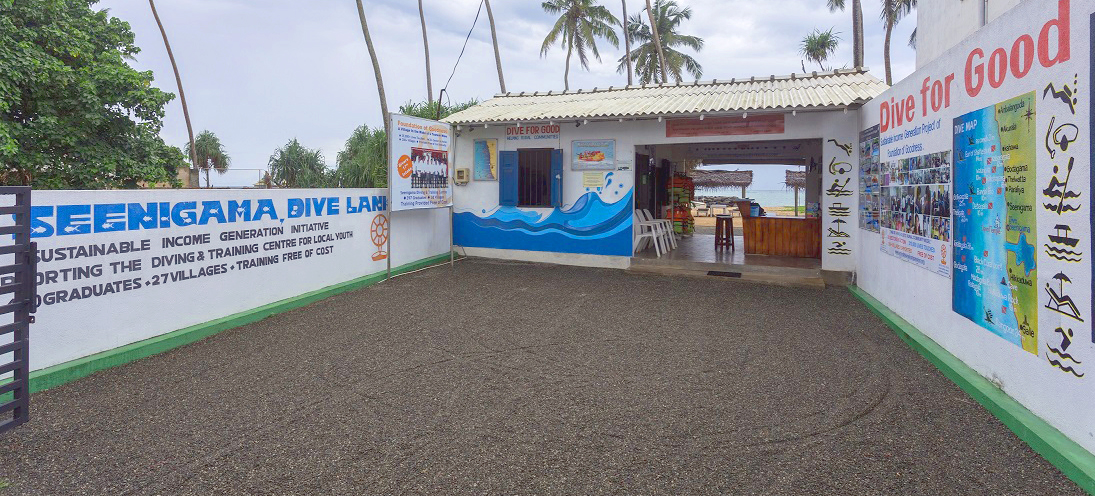
It was in this spirit that the Seenigama Diving & Training Centre was born, in an attempt to provide professional training and PADI licensing to coastal youth to rehabilitate and retrain the youth so that they would be able to utilize their skills to find gainful employment in the global commercial diving industry and even seek employment overseas. This programme was absorbed as part of the Foundation of Goodness’ project headquarters and flagship model in Seenigama which also consists of the MCC Centre of Excellence (where free of charge educational and vocational programmes are conducted together with others services including medical and dental services) and Sports Academy.

Since it was established in 2008, over 420 youth including a pioneering lady diver seeking to overcome her fear of the sea after the tsunami, have been trained and qualified through the Dive Centre. Some of the graduates have also been recruited back in to the Dive Centre to help with a social business venture whereby sustainable income to support the continuation of the dive training programmes (which are provided free of cost to all rural youth) through dive tourism has been introduced.
Fifteen years after the tsunami which brought an effective end to the coastal coral mining industry, having empowered the local youth to find alternative vocational options and transform from coral miners to coral protectors, we also had the opportunity to help restore the coral reefs which had been badly damaged and degraded.
Coral Reef Restoration
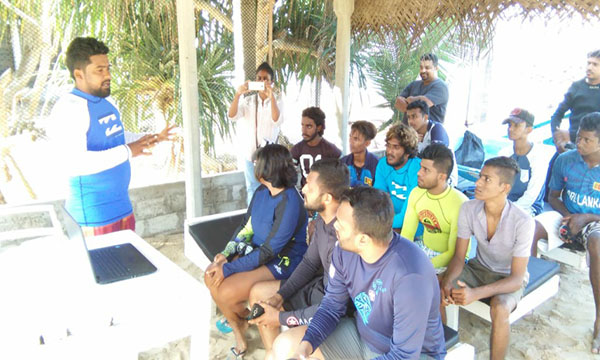
In partnership between Tokyo Cement Group (TCG) and FoG, the landmark project titled: “Participatory Coral Reef Research, Rehabilitation and Conservation in Sri Lanka” which aims to spearhead ‘re-coral-isation’ was introduced in Seenigama in collaboration with scientific partners Wildlife Research & Conservation Trust of Sri Lanka (WRCT) and Marine Research and Consultancy, Blue Resources Trust (BRT), an innovative, practical solution has been introduced to heal the ailing coastal coral reefs.
In November of 2018 our FoG divers from Dive Seenigama, began the pilot project. Following knowledge sharing sessions conducted by Tokyo Cement, our team took the first coral planting dive on the 30th of November 2018. The initial coral nubbins were propagated on coral nurseries then transferred to the Reef-Balls placed strategically along the Seenigama Reef. The changes are slow, but the pilot phase of the project has proven that the Seenigama Reef can be mended and that dedication from all of us is all that is needed to turn things around!
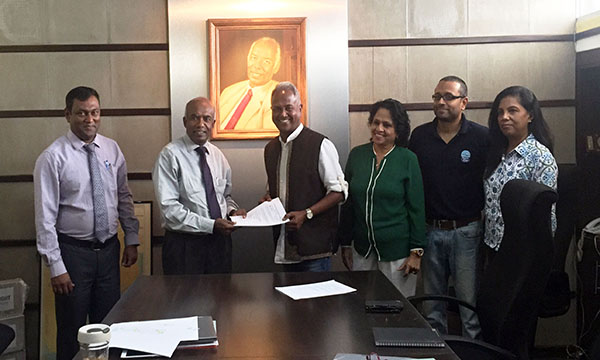
Following the success of the pilot phase, FoG and Tokyo Cement have entered into a Memorandum of Understanding to expand the project and conserve the coral reef of Seenigama.
Adopt a Coral
In an effort to continue to re-coralisation efforts and incorporate it in to the Dive Centre’s activities, the Foundation of Goodness sought to introduce the concept of ‘adopt a coral’ so that it gives visitors and tourists from the global community an opportunity to participate and unite in supporting an issue of global importance. This would give coral and environmental enthusiasts from around the world an opportunity to unite and do something hands on and substantive to take control of creating a better global environment. The decision was made to charge a nominal amount from people willing to ‘adopt’ the coral to cover the costs of planting and maintaining the coral programme.


Coral nubbins that are entangled in fishing nets are procured from local fishermen for no payment or incentives of other sort, and these broken coral are then recycled and replanted in the coral nurseries for adoption. It is our sincere hope that these efforts to restore our coral reefs will not only be a pathway to remedy the errors of our past but also an opportunity to create a better tomorrow for future generations.
In this context, what a beautiful project has emerged from such diversity; not only to direct youth in villages not to follow a traditional but destructive livelihood and rather to become productive and responsible citizens by way of acquiring diving skills for their greater prosperity and also the fact that many foreigners are visiting Dive for Good to see this story unfold.
Our staff stories:
Mangala – Divemaster at Dive for Good, Foundation of Goodness:
An active villager from Thotagamuwa (a smaller village area in Seenigama), 36-year-old Mangala’s main source of income was coral mining and diving. This changed after the 2004 Indian Ocean tsunami. Mangala was living with his sister and brother-in-law in his home close to the lagoon, where he could see the lagoon from his window, about 200-300 meters from the beach. When the tsunami struck, Managala was working close to his home. As soon as he heard about the first wave from the villagers, he headed towards the Galle road in search of his sister. As he was on the Galle road, searching for her the second tsunami wave hit, capturing Mangala in its grip. He was dragged by the waters for about a Kilometer inland. Somehow, Mangala swam hard to avoid drowning and survived. He was able to reunite with his brother-in-law who informed him that his sister was safe. Mangala joined the FoG Dive for Good centre in 2008, and to date he is a proactive staff member, currently employed as a Divemaster, providing great experiences for dive enthusiasts from around the world.
Ubesiri – Employed at Dive For Good, Foundation of Goodness:
61-year-old Ubesiri is from the Seenigama village and his home is situated approximately 800 meters from the beach. Before the Tsunami, his main source of income was coral mining. On the fateful day of the tsunami, when the first wave hit, he was in the Seenigama junction next to the beach. Ubesiri remembers running towards his home to find his wife and two daughters. The family then ran to the Seenigama temple for refuge from the waves. When they arrived the temple had been packed to the brim with frightened villagers. After leaving his family at the temple, Ubesiri made his way towards the Foundation of Goodness MCC Centre to check on the other villagers. When the second wave hit, Ubesiri was swept away in its wrath. Since he could swim well, Ubesiri managed to hold onto a tree and swim back. Even though his immediate family members were safe, many relatives and friends passed away that day. Since 2008, Ubesiri works at the Foundation of Goodness Dive for Good Centre as a proactive staff member. Ubesiri’s two daughters attended Computer Studies courses at FoG and are now employed in BPO operations.


